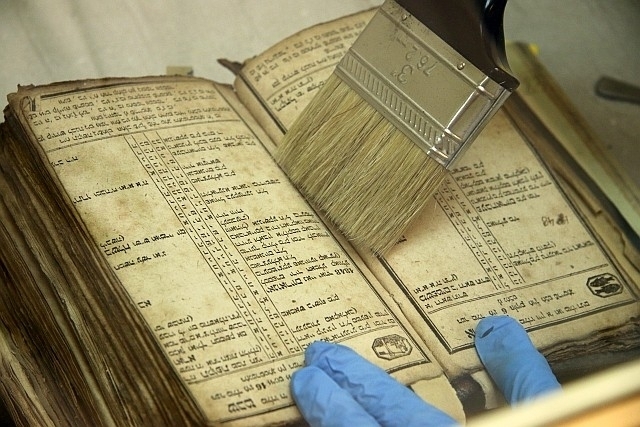
Vilnius, November 3, BNS–As Judaica studies intensify in Vilnius, scholars have identified thousands of important Jewish manuscripts this year which had laid forgotten in a church basement during the Soviet years and were scattered to separate archives for two decades following Lithuanian independence.
Some of the newly identified documents are currently on display in New York City and there are plans to exhibit some of the collection in Lithuania in the near future as well.
Lithuanian National Martynas Mažvydas Library director Renaldas Gudauskas said the identification of ever more documents makes him confident the library currently conserves one of the most significant collections of Judaica in the world.
Hidden at a Church
Vilnius had hundreds of Jewish communal, religious, cultural and education organizations before World War II. YIVO, the Jewish research institute founded in 1925, was an important member of that group. YIVO did work on Jewish life throughout Eastern Europe, from Germany to Russia and from the Baltic to the Balkans, collecting Jewish folklore, memoirs, books, publications and local Jewish community documents, and published dictionaries, brochures and monographs.
Most of the documents are written in Hebrew and Yiddish and some date back to the 17th century.
The Nazis began looting Vilnius Jewish cultural treasures in 1941 as the Jewish population was exterminated. Some of YIVO’s book and manuscript collection were sent by train to Frankfurt. After the war US soldiers discovered this material and sent it to YIVO in New York City, the world headquarters of the organization following the fall of Vilnius.
The Lithuanian Antanas Ulpis was director of the Palace of Books in Vilnius after the war and saved unique documents left in the ruins of the Vilnius ghetto, including publications and manuscripts. He hid them at the St. Jurgis church which was designated as a storage site for the Palace of Books after the war.
After Lithuanian independence the documents gradually came to scholarly attention, but deeper investigation only began in the last few years as a joint project with YIVO began. The Lithuanian national library added impetus with the opening of a Judaica Studies Center there last year.
Collecting Jewish Heritage
Judaica Studies Center director Dr. Lara Lempertienė said the existence of manuscripts was known, but only this year circumstances came together for the appropriate institutions, specialists and partners to take stock of the documents and begin work.
“After the center was established, our colleagues informed us there were a large number of documents thought to be of Jewish provenance conserved in the manuscripts department of the main library, and suggested we take a look at them. So many were discovered that we were allocated very quickly an entire section just for Jewish manuscripts,” Dr. Lempertienė told BNS.
She said the documents formerly scattered in different locations are connected conceptually, intellectually and now physically as well.
in October YIVO headquarters presented for the first time the ten most important newly identified documents from the Lithuanian national library’s Judaica documentary heritage collection.
These include the manuscript of a tractate on astronomy by Ber Karmol published in 1751, a manuscript in Yiddish by Abraham Goldfaden from 1883, a contract hand-written by Izak Leibush Peretz in Warsaw in 1914, Jewish historian Simon Dubnov’s letter to Zalmen Reizen written in Riga in 1934 and the manuscript of Ten Poems written by Vilnius poet Abraham Sutzkever in the Vilnius ghetto in 1943.
The New York Times published an article about these finds recently. Jewish history professor David Fishman of the Jewish Theological Seminary, who visited Vilnius last July to assess the discoveries, called the collection “gold.”
Under the joint project between the national library and YIVO from December of 2015 to September of 2017 a total of 2,688 books from the Judaica collection have been digitized, the library reported.
![]()

